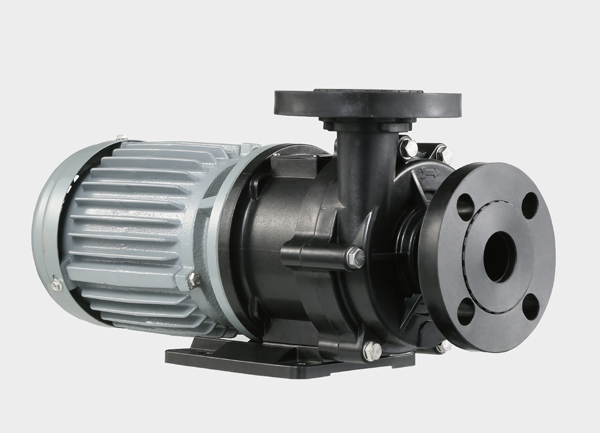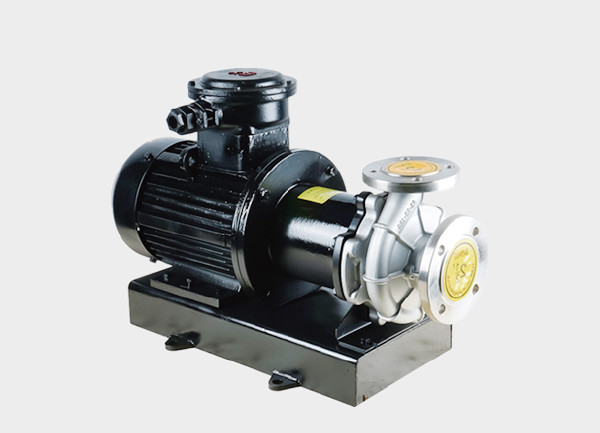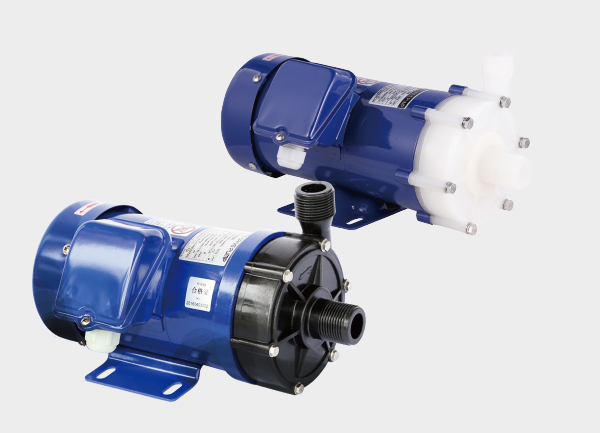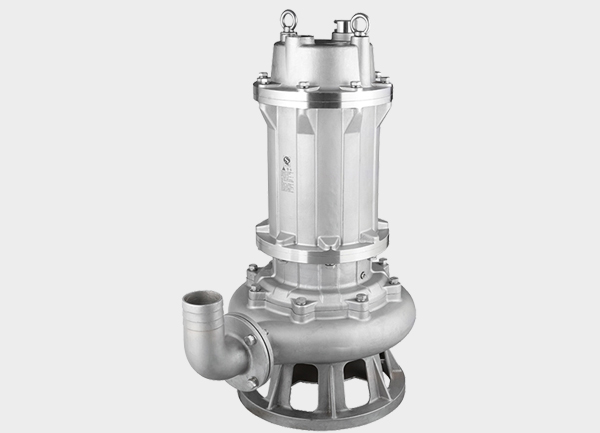Acid-resistant chemical pumps are industrial devices specifically designed to handle highly corrosive acids such as sulfuric acid, hydrochloric acid, and nitric acid. Their core advantages lie in corrosion resistance, sealing reliability, and structural adaptability, making them suitable for various concentrations, temperatures, and solids-containing acidic media. This article provides a detailed technical guide covering principles, pump types, selection criteria, applications, maintenance, and safety considerations.

1. Technical Principles and Core Design
Acid-resistant pumps primarily operate on the centrifugal principle: an electric motor drives the impeller, generating centrifugal force that moves the liquid from the suction to the discharge side. The design challenges include corrosion protection and leak prevention. Key design features include:
Corrosion-Resistant Materials
Overlap components such as impellers, pump bodies, and casings use non-metallic liners or fully corrosion-resistant materials like:Fluoroplastics (F46, PFA)
Ultra-high-molecular-weight polyethylene (UHMWPE)
High-purity alumina ceramics
These materials withstand long-term exposure to over 99% of inorganic and organic acids. In extreme conditions, specialty alloys such as Hastelloy C276 or 2205 duplex stainless steel are used to balance corrosion resistance and mechanical strength.
Sealing Technology Optimization
Leakage is a major concern in acid pumping. Main approaches include:Mechanical seals: Preferably external bellows type; hard-hard seals (SiC-SiC) for solids-containing acids to reduce wear.
Magnetic drive seals: Use permanent magnet coupling for contactless transmission, eliminating shaft seal leakage. Ideal for highly toxic or ultra-pure acids.
Structural Adaptation
Designs are optimized for specific conditions:Self-priming pumps: Flow channels improve suction height (up to 5 m).
Slurry pumps: Thicker liners for enhanced abrasion resistance.
High-temperature pumps (PFA-lined): Special insulation structures for handling acids above 200℃.
2. Core Classifications and Typical Products
Acid-resistant pumps can be classified by structure type and material, with different types addressing specific industrial requirements.
2.1 By Structure Type
Fluoroplastic Centrifugal Pumps
The most widely used for large flow and medium-to-low head applications.
Example: IHF seriesMetal casing with F46 fluoroplastic liner
Hexagonal mesh structure enhances liner-to-metal adhesion
Temperature range: -20℃ to 120℃
Max head: 32 m
Typical application: Chlorine water transport in ion membrane caustic soda projects; lifespan tripled compared to stainless steel pumps.
Magnetic Drive Pumps
Seal-less design, zero leakage; ideal for toxic or ultra-pure acids.
Example: CQB seriesF46 fluoroplastic alloy for wetted parts
Dense magnetic matrix improves torque efficiency
Temperature range: -20℃ to 100℃
Max head: 50 m
Applications: Lithium battery electrolytes, high-purity nitric acid transport.
Self-Priming Pumps
Pump self-primes without pre-filling; suitable for frequent start-stop and space-limited setups.
Example: Turbocharged self-priming pumpsFRPP material resistant to corrosion
Suction height: 5 m
Dry-run protection: up to 20 hours
10–20% higher efficiency than standard self-priming pumps
Slurry Pumps
Focus on abrasion and corrosion resistance, suitable for solids-laden acidic slurries.
Example: UHB-ZK seriesSteel-lined UHMWPE
Handles >30% solids in acid slurry
Temperature range: -20℃ to 80℃
Max head: 50 m
Annual maintenance cost reduced by 60% compared to rubber-lined pumps
2.2 By Material
Fluoroplastic Pumps (F46, PFA)
Excellent chemical resistance, suitable for most strong acids except aqua regia and hydrofluoric acid. PFA-lined pumps handle temperatures up to 200℃, ideal for concentrated sulfuric acid (>120℃).Ceramic Pumps
High-purity alumina suitable for semiconductor-grade ultra-pure water and acids. Fragile, must avoid mechanical impact or rapid temperature changes.Metal Alloy Pumps
Used in extreme conditions:Hastelloy C276: Resistant to hydrofluoric acid, wet chlorine gas
2205 duplex stainless steel: Resistant to chloride stress corrosion, temperatures -50℃ to 300℃, heads up to 100 m
316L stainless steel: Suitable for dilute sulfuric acid (<30%) or acetic acid, lower cost but limited strong acid resistance
3. Key Parameters and Selection Guidelines
Selecting the right pump requires matching process requirements with medium characteristics.
3.1 Core Parameter Matching
Flow and Head: Choose according to process needs; avoid oversized pumps with low flow (“big pump, small use”). Variable flow can use VFDs.
Temperature & Pressure:
Standard F46 pumps: -20℃ to 120℃, ≤1.6 MPa
High-temp PFA-lined pumps: up to 200℃
Centrifugal pumps: up to 2.5 MPa
Extreme >300℃: specialty alloy pumps
Medium Properties:
Acid concentration: Concentrated H₂SO₄ (>98%) → F46; dilute H₂SO₄ (<30%) → 316L
Solids content: Slurry pumps for solids; magnetic drive pumps for particle-free ultra-pure acids
Oxidation: Strong oxidizers (HNO₃, aqua regia) → fluoroplastic magnetic pumps
3.2 Material & Seal Selection Logic
Material Selection:
Ordinary strong acids → Fluoroplastic centrifugal pump (IHF series)
Strong oxidizers → Full fluoroplastic magnetic pump (CQB series)
Solids-laden acids → Steel-lined UHMWPE slurry pump (UHB-ZK series)
High-temp concentrated H₂SO₄ (>120℃) → PFA-lined pump
HF / wet Cl₂ → Hastelloy C276
Sealing Selection:
Particle-free acids → External bellows mechanical seal
Solids-containing acids → Hard-hard SiC mechanical seal
Toxic / high-purity acids → Magnetic seal (zero leakage)
4. Application Scenarios and Case Studies
Acid-resistant pumps serve chemical, metallurgy, new energy, and environmental industries.
Chemical Industry: IHF fluoroplastic pumps transport chlorine water in ion membrane caustic soda plants; lifespan extended from 1 year to 3+ years.
Non-Ferrous Metallurgy: UHB-ZK slurry pumps handle zinc plant acidic slurries (>25% solids); maintenance costs drop from $100,000 to $40,000/year.
New Energy Materials: CQB magnetic pumps transport lithium battery electrolytes, preventing metal ion contamination, maintaining electronic-grade purity.
Environmental Treatment: FRPP self-priming pumps process electroplating wastewater with acids (chromic acid, sulfuric acid); self-priming reduces installation complexity.
5. Maintenance and Technological Trends
5.1 Routine Maintenance
Regular Checks: Quarterly inspection of mechanical seals for wear; monitor magnetic coupling torque to prevent demagnetization; check corrosion protection coatings on metal pumps.
Dry-Run Protection: Install liquid level sensors to prevent dry running. Magnetic pumps: max 3 min dry-run; centrifugal pumps: max 5 min.
Material Protection: Avoid rapid temperature changes for fluoroplastics; prevent ceramic impacts.
5.2 Emerging Technologies
Smart Upgrades: IoT-enabled pumps monitor flow, vibration, temperature; AI predicts faults (digital twin technology achieves 92% fault prediction accuracy).
Energy Efficiency: High-efficiency hydraulic models and VFDs improve pump efficiency by 15%, saving up to 30% annual energy.
Advanced Materials: Nano-coatings enhance ceramic impact resistance; PVDF liners extend service life in strong acids by 50%.
6. Safety and Environmental Considerations
Leak Protection: Magnetic and sealless pumps achieve zero leakage, complying with EU SEVESO III directives for hazardous chemicals.
Green Manufacturing: Fluoroplastic pumps are recyclable; VFDs reduce carbon emissions, aligning with China’s dual-carbon targets.
Summary: Selecting acid-resistant pumps requires balancing medium characteristics, process requirements, and cost, prioritizing proven products such as IHF, CQB, UHB series. Combining preventive maintenance with smart monitoring enhances reliability, efficiency, and lifecycle cost savings.







